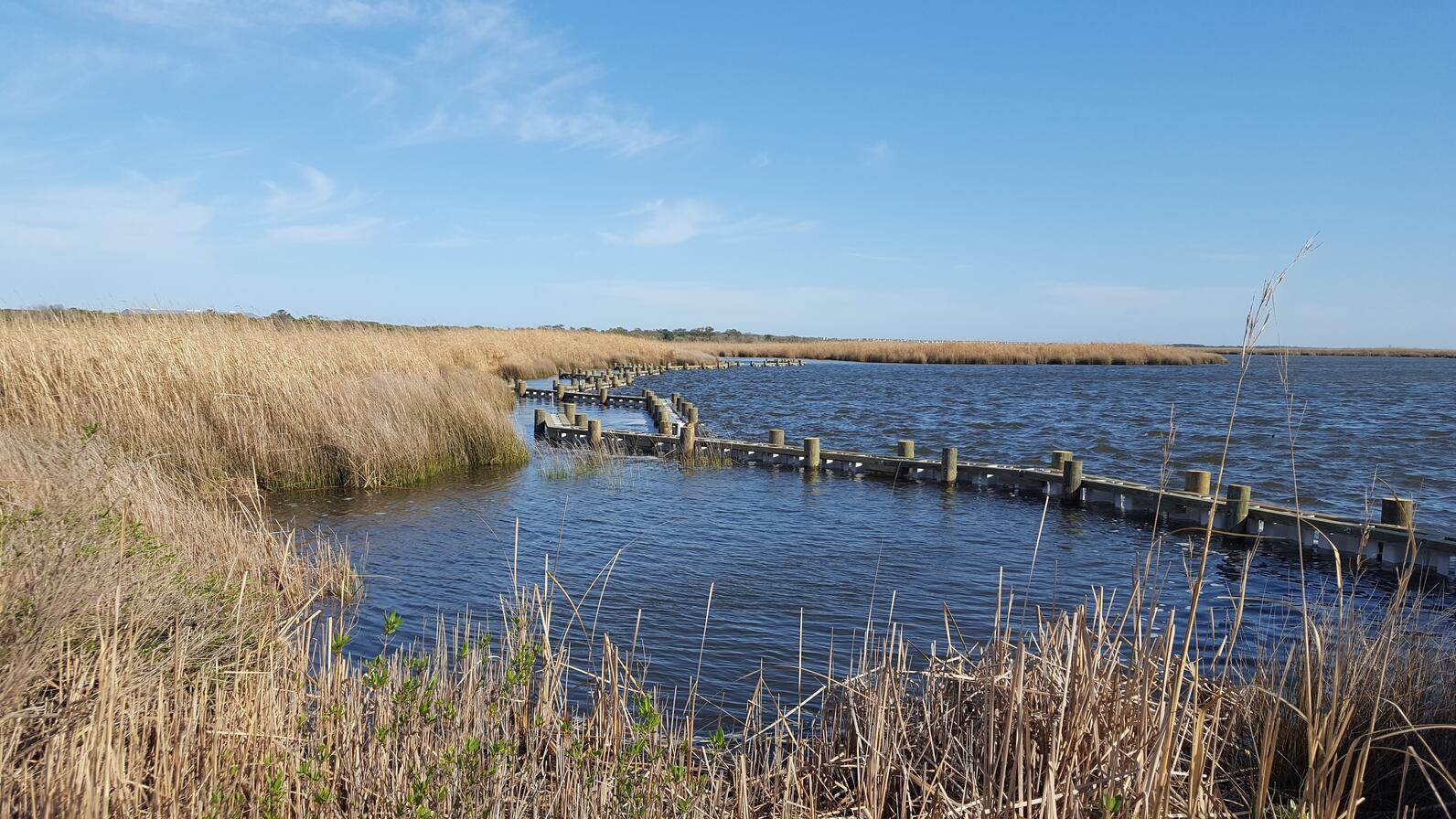The marshes of Currituck Sound on the Outer Banks are always moving with life, from the egrets and bitterns that patrol the tall grasses to the tiny aquatic organisms that drift with the tide. A new living shoreline project at Audubon’s Donal C. O’Brien, Jr. Sanctuary at Pine Island will protect this habitat on the sound while allowing life to continue flowing through the marsh.
The living shoreline extends 500 feet along the edge of marshes near the sanctuary’s dock and was completed earlier this year. The project consists of a wood and vinyl breakwater—what essentially looks like a sturdy, partially-submerged backyard fence—that allows fish, crabs, and water to pass through. The goal is to protect the marsh from waves and storm surge.
One of the advantages of installing a living shoreline is that they allow organic material to flow back and forth, unlike traditional methods of preventing erosion, such as seawalls. Sea walls and bulkheads lead to increased erosion and prevent marshes from re-growing or moving naturally.

Living shorelines stabilize marshes and create a range of ecological benefits for the entire system. At Pine Island, the project will help protect a portion of the marsh that is disappearing quickly.
“At this location, a narrow spit of marshland was eroding at nearly half-a-foot per year and was rapidly approaching the point where waves would create a gap in the marsh,” said Robbie Fearn, sanctuary director at Pine Island. “Had that occurred the waves would then have moved farther inland and begun washing away the high marsh behind it.”
The high marsh provides critical habitat for a whole suite of secretive marsh birds that use the tall grasses for nesting. Many of these species—such as Clapper Rails, Least Bitterns, and Saltmarsh Sparrow –already face challenges from habitat destruction. The existing marshes also help shield the sanctuaries boat house and water access used by researchers.
“The spit of land protects access to the sound from which we work to preserve the extensive other lower marshes at Pine Island,” Fearn said. “That launch point is a historic access that has been used for three centuries.”
The living shoreline wall or “sill” traps sediment. Once sediment builds up behind the sills, the plan is to plant native grasses which will help bind the mud into a cohesive shoreline.
“In rough water events, the sills provide a terrific zone of calm water between the sill and the shore, reducing erosion,” Fearn said. “New areas of muck are building up behind the sills. These areas will be colonized by marsh grasses, improving the interface between land and water.”
Funded by an $116,500 grant from the Clean Water Management Trust Fund, the project will help build stronger, more resilient marshes through natural processes. Currituck Sound loses 72 acres of marsh every year to rising seas and erosion, eating away at habitat that birds and other coastal animals need to survive. Protecting these marshes helps flora and fauna, but it also protects communities along the sound from storm surge, flooding, and erosion.
Living shorelines are a newer solution to shoreline erosion and can take a variety of forms, but they generally involve using as many natural components as possible, such as native plants and other natural resources like rock and sand. Living shorelines serve important functions—they buffer coastal ecosystems and communities from storm surge and flooding, reduce the rate of shoreline erosion, and increase biodiversity by creating and protecting important habitat.
The living shoreline at Pine Island is just one of several projects happening at the sanctuary. State and federal grants awarded earlier this year are funding a comprehensive marsh restoration planning and design project on the sound.







